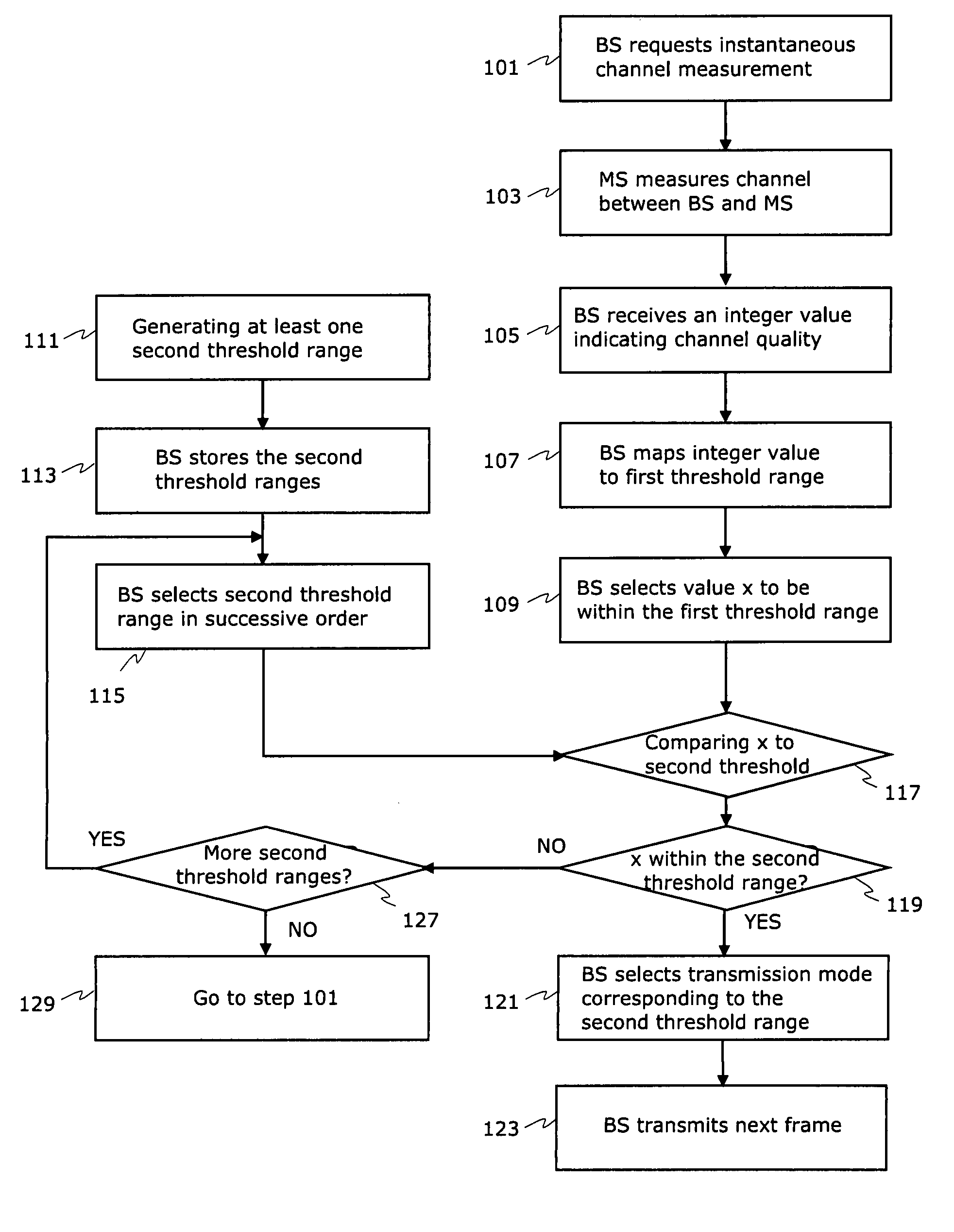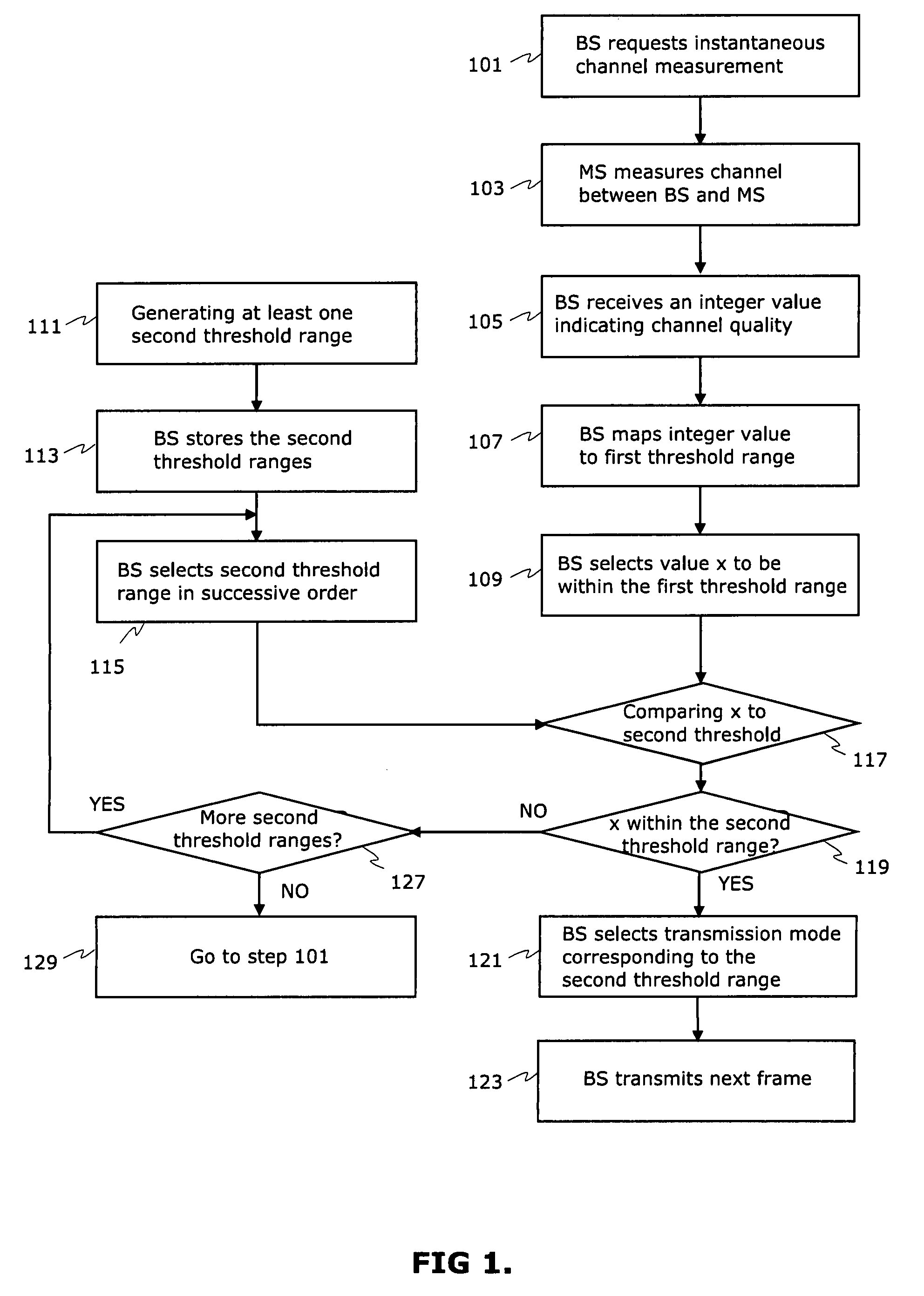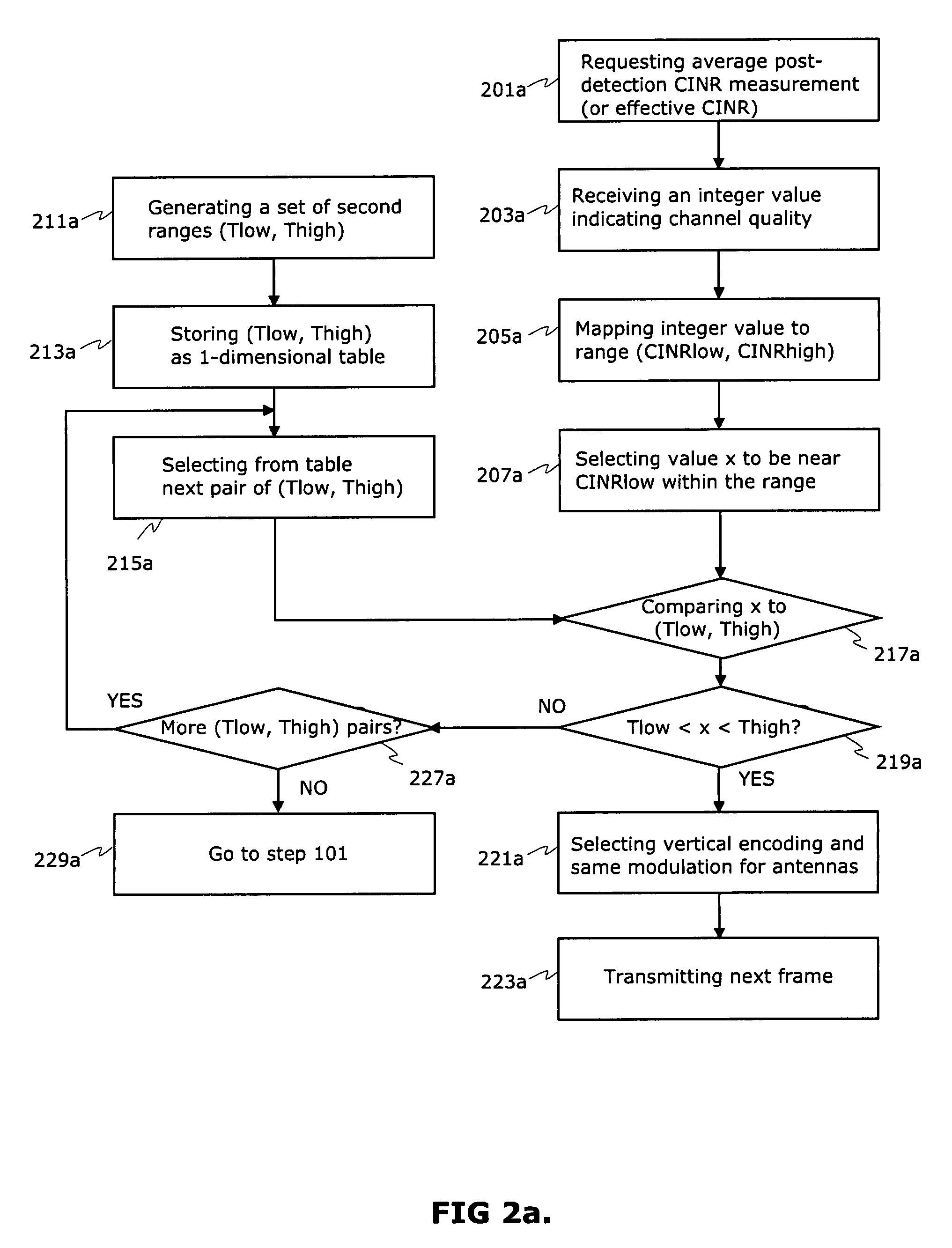Method for optimizing spatial modulation in a wireless link and network element thereto
a wireless link and network element technology, applied in the field of optimizing spatial modulation in a wireless link and network element thereto, can solve the problems of not improving the peak data rate (throughput), bs has to rely on the capabilities offered by mss, and selection cannot guarantee the best transmission data rate in every, so as to improve the reliability of data transmission, reduce channel capacity drop, and maximize the total transmission throughput
- Summary
- Abstract
- Description
- Claims
- Application Information
AI Technical Summary
Benefits of technology
Problems solved by technology
Method used
Image
Examples
Embodiment Construction
[0058]FIG. 1 depicts that in step 101 BS requests MS to send information about a channel quality in the wireless link between BS and MS. The request includes information about what type of channel-condition measurement is desired by BS and at least a parameter defined to allow a capture of instantaneous characteristics of the channel to be measured. The request further includes information that a frame-by-frame measurement is requested. According to the WiMax standard specified in Technical Specifications IEEE 802.16e it is mandatory to every MS in the WiMax network to provide such channel-condition measurements on request. Then, in step 103 MS performs the requested channel-condition measurements and sends as a response to BS information indicating the channel quality in the wireless link. The response comprises information indicating either physical measurement of the channel condition or effective measurement of the channel condition that is possible for this particular MS sendin...
PUM
 Login to View More
Login to View More Abstract
Description
Claims
Application Information
 Login to View More
Login to View More - R&D
- Intellectual Property
- Life Sciences
- Materials
- Tech Scout
- Unparalleled Data Quality
- Higher Quality Content
- 60% Fewer Hallucinations
Browse by: Latest US Patents, China's latest patents, Technical Efficacy Thesaurus, Application Domain, Technology Topic, Popular Technical Reports.
© 2025 PatSnap. All rights reserved.Legal|Privacy policy|Modern Slavery Act Transparency Statement|Sitemap|About US| Contact US: help@patsnap.com



